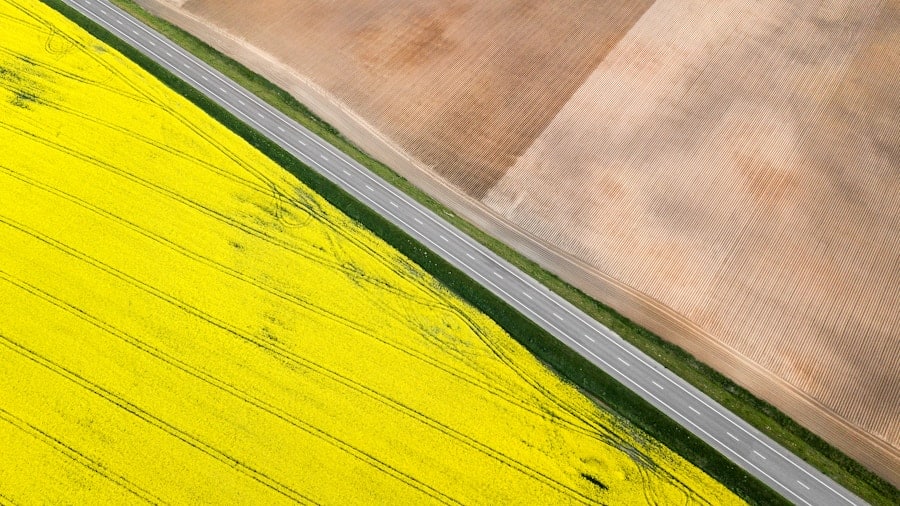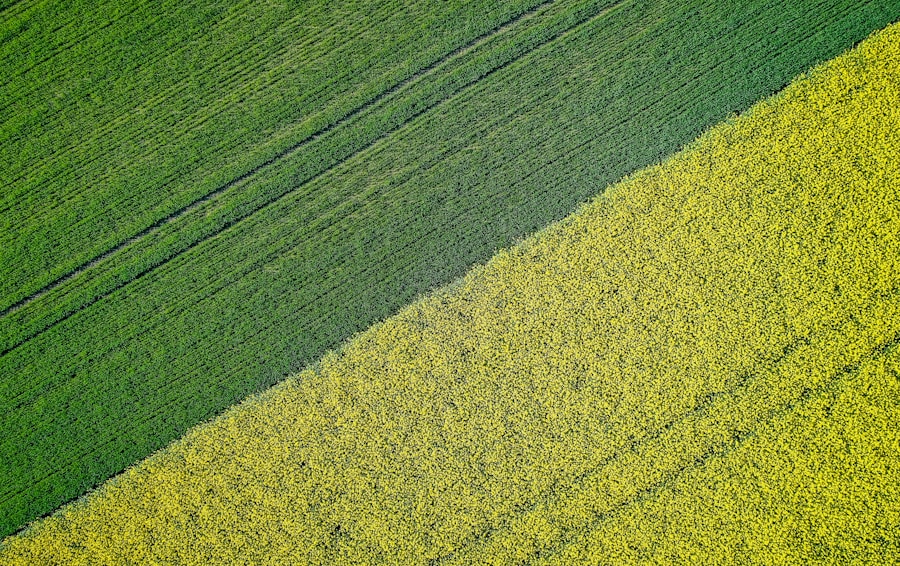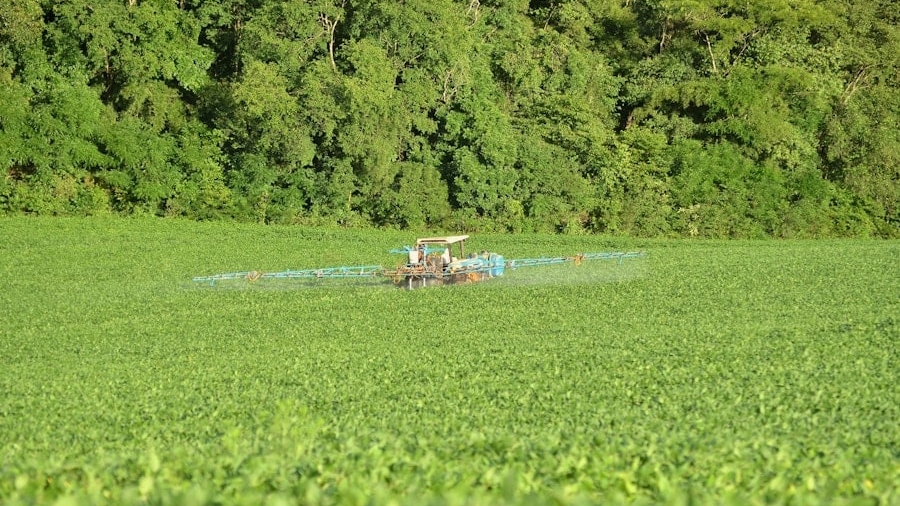The advent of artificial intelligence (AI) has ushered in a new era for various sectors, and agriculture is no exception. AI-powered smart agriculture represents a transformative approach that leverages advanced technologies to enhance farming practices, optimize resource use, and improve crop yields. By integrating AI with traditional agricultural methods, farmers can make data-driven decisions that lead to more sustainable practices.
This innovative approach not only addresses the challenges of food security but also promotes environmental stewardship by minimizing the ecological footprint of farming activities. Smart agriculture encompasses a range of technologies, including machine learning, data analytics, and the Internet of Things (IoT). These technologies enable farmers to monitor their crops and soil conditions in real-time, allowing for precise interventions when necessary.
For instance, sensors can collect data on soil moisture levels, temperature, and nutrient content, which can then be analyzed by AI algorithms to provide actionable insights. This level of precision is particularly crucial in addressing one of the most pressing issues in modern agriculture: the overuse of pesticides.
Key Takeaways
- AI-powered smart agriculture utilizes advanced technology to optimize farming practices and reduce the reliance on pesticides.
- Pesticide overuse in traditional agriculture has led to environmental damage, health risks, and decreased soil fertility.
- AI-powered smart agriculture works by using data from sensors, drones, and satellites to monitor and manage crop health, soil conditions, and weather patterns.
- The benefits of AI-powered smart agriculture include reduced pesticide use, increased crop yields, and improved environmental sustainability.
- Case studies have shown successful implementation of AI-powered smart agriculture in various crops, leading to significant reductions in pesticide overuse and increased profitability for farmers.
The Problem of Pesticide Overuse in Traditional Agriculture
Human Health Impacts
The World Health Organization has reported that millions of people are affected by pesticide poisoning each year, highlighting the urgent need for more sustainable agricultural practices.
Environmental Consequences
The environmental impact of pesticide overuse cannot be overstated. Chemicals used in pesticides can leach into soil and water systems, leading to contamination that affects not only agricultural land but also surrounding ecosystems.
Threats to Ecosystem Health and Food Security
Pollinators such as bees are particularly vulnerable to pesticide exposure, which has been linked to declining populations and biodiversity loss. The consequences extend beyond immediate agricultural concerns; they pose long-term threats to food security and ecosystem health. As the global population continues to grow, the challenge of balancing agricultural productivity with environmental sustainability becomes increasingly critical.
How AI-Powered Smart Agriculture Works

AI-powered smart agriculture employs a variety of technologies to create a more efficient and responsive farming system. At its core, this approach relies on data collection and analysis to inform decision-making processes. Sensors placed throughout fields can monitor various parameters such as soil moisture, temperature, humidity, and even pest populations.
This data is transmitted to cloud-based platforms where AI algorithms analyze it to identify patterns and predict future conditions. Machine learning models can be trained on historical data to forecast pest outbreaks or disease occurrences based on environmental factors. For example, if certain weather conditions are known to correlate with an increase in specific pests, AI can alert farmers to take preventive measures before an infestation occurs.
Additionally, drones equipped with imaging technology can survey large areas of farmland quickly, providing high-resolution images that help identify problem areas requiring attention. This level of precision allows farmers to apply pesticides only where necessary, significantly reducing overall usage. Furthermore, AI systems can integrate with existing farm management software to provide comprehensive insights into crop health and resource allocation.
By analyzing data from multiple sources—such as weather forecasts, market trends, and soil health—farmers can make informed decisions about when to plant, irrigate, or apply fertilizers and pesticides. This holistic approach not only enhances productivity but also fosters a more sustainable relationship between agriculture and the environment.
Benefits of AI-Powered Smart Agriculture in Reducing Pesticide Overuse
The implementation of AI-powered smart agriculture offers numerous benefits that directly contribute to reducing pesticide overuse. One of the most significant advantages is the ability to apply pesticides more selectively. By utilizing real-time data and predictive analytics, farmers can target specific areas that require treatment rather than applying chemicals uniformly across entire fields.
This targeted approach minimizes chemical exposure to non-target organisms and reduces the likelihood of developing pesticide-resistant pests. Additionally, AI systems can help farmers adopt integrated pest management (IPM) strategies that combine biological control methods with chemical applications. For instance, AI can identify beneficial insects that naturally control pest populations, allowing farmers to rely less on synthetic pesticides.
By promoting biodiversity within agricultural ecosystems, farmers can create a more resilient environment that supports natural pest control mechanisms. Moreover, the economic benefits of reducing pesticide use are substantial. Farmers can save money by decreasing their reliance on expensive chemical inputs while simultaneously improving crop yields through better management practices.
The reduction in pesticide application also leads to lower health risks for farmworkers and consumers alike, contributing to a safer food supply chain. As consumers increasingly demand sustainably produced food, adopting AI-powered smart agriculture practices can enhance market competitiveness for farmers.
Case Studies of Successful Implementation of AI-Powered Smart Agriculture
Several case studies illustrate the successful implementation of AI-powered smart agriculture and its impact on reducing pesticide overuse. One notable example is the use of AI-driven precision agriculture techniques by large-scale cotton farmers in Australia. By employing drones equipped with multispectral cameras and machine learning algorithms, these farmers were able to monitor crop health and identify pest infestations early on.
As a result, they reduced their pesticide usage by up to 30%, while simultaneously increasing their cotton yields.
By integrating IoT sensors with machine learning models, vineyard managers could predict grapevine diseases based on environmental conditions such as humidity and temperature fluctuations.
This proactive approach allowed them to apply fungicides only when necessary, leading to a significant reduction in chemical applications without compromising grape quality or yield. In India, smallholder farmers have also benefited from AI-powered smart agriculture initiatives aimed at improving crop management practices. Through mobile applications that utilize AI algorithms for pest identification and management recommendations, these farmers have been able to reduce their pesticide use by nearly 40%.
The accessibility of such technology empowers farmers with knowledge and tools that were previously out of reach, fostering sustainable practices even in resource-limited settings.
Challenges and Limitations of AI-Powered Smart Agriculture

Financial Barriers
One significant obstacle is the initial cost associated with implementing advanced technologies such as sensors, drones, and data analytics platforms. For many smallholder farmers or those operating on tight budgets, these upfront investments may be prohibitive.
Technical and Data-Related Challenges
Additionally, there may be a lack of technical expertise required to operate and maintain these systems effectively. Data privacy and security concerns also pose challenges in the realm of smart agriculture. As farmers increasingly rely on cloud-based platforms for data storage and analysis, questions arise regarding who owns this data and how it is used.
Ensuring Fairness and Data Quality
Ensuring that farmers retain control over their data while benefiting from shared insights is crucial for fostering trust in these technologies. Furthermore, the effectiveness of AI-powered solutions is contingent upon the quality and quantity of data available for analysis. In regions where data collection infrastructure is lacking or inconsistent, the predictive capabilities of AI may be limited. This disparity can exacerbate existing inequalities within the agricultural sector, as larger farms with access to better resources may reap greater benefits from AI technologies compared to smaller operations.
The Future of AI-Powered Smart Agriculture in Sustainable Farming
Looking ahead, the future of AI-powered smart agriculture appears promising as it continues to evolve alongside advancements in technology and data science. The integration of machine learning with emerging technologies such as blockchain could enhance traceability within food supply chains while ensuring transparency regarding pesticide use and sustainability practices. This could further incentivize farmers to adopt environmentally friendly practices as consumers increasingly demand accountability from producers.
Moreover, ongoing research into developing more robust algorithms will likely improve the accuracy of predictions related to pest outbreaks and crop health monitoring. As these technologies become more accessible and affordable, even smallholder farmers will have opportunities to leverage AI for improved decision-making processes. Collaboration between tech companies, agricultural researchers, and policymakers will be essential in shaping the future landscape of smart agriculture.
By fostering partnerships that prioritize sustainability and equitable access to technology, stakeholders can work together towards creating resilient food systems capable of meeting global demands while minimizing environmental impacts.
The Role of AI-Powered Smart Agriculture in Reducing Pesticide Overuse
AI-powered smart agriculture stands at the forefront of addressing one of the most pressing challenges facing modern farming: pesticide overuse. Through its ability to provide precise insights into crop health and pest management needs, this innovative approach empowers farmers to make informed decisions that enhance productivity while safeguarding human health and the environment. As case studies demonstrate successful implementations across various contexts, it becomes evident that embracing technology is not merely an option but a necessity for sustainable agricultural practices moving forward.
The journey towards widespread adoption may be fraught with challenges; however, the potential benefits far outweigh the obstacles. By harnessing the power of AI alongside traditional farming knowledge, we can pave the way for a more sustainable future—one where food security is achieved without compromising ecological integrity or public health.
A related article discussing the best laptops for graphic design in 2023 can be found here. This article provides valuable information on the top laptops that are ideal for graphic designers looking to enhance their productivity and creativity. By utilizing advanced technology and powerful hardware, graphic designers can efficiently work on projects related to smart agriculture and reduce the overuse of pesticides.
FAQs
What is AI-powered smart agriculture?
AI-powered smart agriculture refers to the use of artificial intelligence (AI) and advanced technologies to optimize and improve agricultural practices. This includes using AI to analyze data from various sources such as sensors, drones, and satellites to make informed decisions about crop management, irrigation, and pest control.
How is AI reducing the overuse of pesticides in agriculture?
AI is reducing the overuse of pesticides in agriculture by enabling farmers to more accurately target and treat pest infestations. By analyzing data on crop health, pest populations, and environmental conditions, AI can help farmers identify specific areas of their fields that require pesticide treatment, reducing the overall amount of pesticides used.
What are the benefits of using AI in smart agriculture to reduce pesticide overuse?
Some benefits of using AI in smart agriculture to reduce pesticide overuse include:
– Minimizing environmental impact by reducing the amount of chemicals released into the environment
– Lowering production costs for farmers by optimizing pesticide use
– Improving crop quality and yield by targeting pest infestations more effectively
What are some examples of AI-powered technologies used in smart agriculture to reduce pesticide overuse?
Examples of AI-powered technologies used in smart agriculture to reduce pesticide overuse include:
– Drones equipped with AI algorithms to identify and target specific areas of pest infestations
– Sensor networks that collect data on crop health and pest populations for AI analysis
– AI-powered decision support systems that provide farmers with recommendations for pesticide use based on real-time data.

